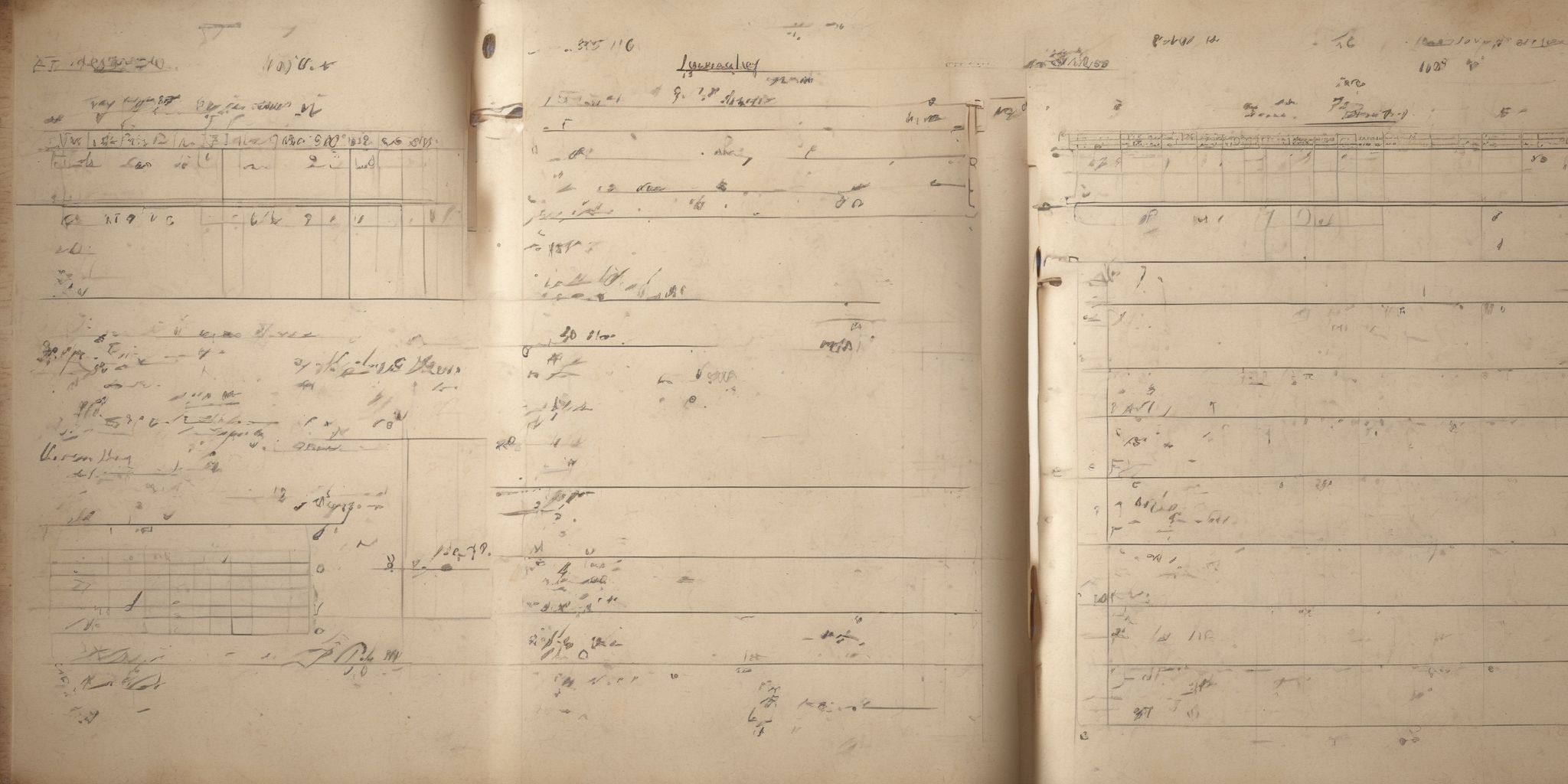Streamline Your Finances with an Expenses Template
Managing and organizing your finances can often feel like a never-ending jigsaw puzzle. With bills to pay, expenses to track, and savings goals to meet, it's easy to get overwhelmed in the chaos. But fear not, because there's a simple yet effective solution to bring order to this monetary madness: an expenses template.
Regardless of whether you're a financially savvy individual or just starting to dip your toes into money management, using an expenses template can streamline your finances like never before. So, let's dive in and discover how this powerful tool can put you firmly in control of your financial journey.
Why is it important to manage your finances?
Managing your finances is fundamental to achieving financial stability and achieving your goals. By using an expenses template, you gain valuable insights into your spending habits and financial patterns. This awareness enables you to make informed decisions about your expenses and identify areas where you can cut back and save.
Additionally, a well-organized expenses template provides clarity on your financial situation and helps you plan for the future. You can track your income, monitor your expenses, and set realistic budgets. With better control over your finances, you can reduce financial stress and work towards achieving your financial aspirations.
Benefits of Using an Expenses Template
Improved Organization
Using an expenses template helps you streamline your finances by providing a structured system for organizing your income and expenses. With clearly defined columns and categories, you can easily track where your money is coming from and where it is going. This allows you to maintain a comprehensive overview of your financial situation, making it easier to identify patterns, spot areas of overspending, and make informed decisions. For instance, you can effortlessly track recurring expenses such as monthly bills or subscription fees, ensuring they don't slip through the cracks. By having all your financial information in one place, you can quickly reference and analyze it whenever needed, promoting better organization and control over your finances.
Time and Effort Savings
One of the major benefits of using an expenses template is the significant time and effort savings it offers. With a well-designed template, you can streamline your financial tracking process and eliminate the need for manual calculations and record-keeping. By automating the categorization and organization of your expenses, you can quickly and effortlessly track your spending habits.
This allows you to allocate more time towards managing your finances strategically and making informed decisions.
For example, instead of spending hours manually adding up receipts and categorizing expenses, you can simply enter the details into the template and let it do the calculations for you.
Enhanced Financial Awareness
By using an expenses template, you gain a better understanding of your financial situation. With all your income and expenses laid out in a clear format, you can easily identify spending patterns and areas where you can cut back. This heightened awareness enables you to make informed decisions about your finances. For example, by tracking your monthly expenses, you may discover that dining out frequently is a significant drain on your budget. Armed with this knowledge, you can adjust your spending habits and allocate funds more wisely. The expenses template acts as a mirror, reflecting your financial choices and empowering you to take control.
Key Components of an Expenses Template
Income Tracking
Income Tracking is a crucial aspect of an Expenses Template. By accurately tracking your income, you gain a comprehensive understanding of your financial situation. This helps you make informed decisions on budgeting and spending. In your Expenses Template, include columns or sections to record your various sources of income such as salary, freelance work, or side gigs. Be sure to update this information regularly to stay up-to-date with your earnings.
With accurate income tracking, you can better analyze your financial health and plan for future expenses or savings goals.
Expense Categories
Organizing your expenses into categories is a practical way to keep track of your financial transactions. By grouping similar expenses together, you can gain insights into your spending patterns and identify areas where you can cut back or allocate more funds. Common expense categories include housing, transportation, groceries, utilities, entertainment, and healthcare.
For example, if you notice that a significant portion of your income is going towards dining out, you can create a separate category for dining expenses and set a budget to better manage this spending. Categorizing expenses allows you to easily analyze your financial data and make informed decisions to streamline your finances.
Expense Details
Expense Details play a vital role in an Expenses template. This section allows you to capture and record the specific information for each expense incurred. The details typically include the date of the expense, the amount spent, the merchant or vendor, and a brief description of the expense. By documenting these details, you can easily track where your money is going, identify spending patterns, and make informed decisions about your budget.
For example, if you notice that a significant portion of your expenses is going towards dining out, you may decide to cut back and allocate more funds towards savings or other financial goals.
Using an Expenses Template: Step-by-Step Guide
Download or Create a Template
To start streamlining your finances with an expenses template, the first step is to either download an existing template or create one yourself. Many websites and financial software offer free downloadable templates that you can easily customize to fit your needs. Alternatively, you can create your own template using a spreadsheet program like Excel or Google Sheets. Consider including columns for income tracking, expense categories, and expense details.
Remember to keep it simple and organized, making it easy to input and update your financial data regularly.
Set Up Income Tracking Columns
To set up income tracking columns in your expenses template, create a designated section to record your sources of income. Include columns for income description, such as salary or freelance work, and the corresponding amounts. This enables you to have a clear overview of your income sources and their contributions to your overall financial situation.
For example, if you have multiple streams of income, like rental properties or investments, having separate columns allows you to easily monitor and analyze the performance of each source.
Additionally, consider including a column for the date or frequency of income to track its consistency.
Customize Expense Categories
When using an expenses template, customizing expense categories allows you to tailor the template to your unique financial situation. By creating categories that align with your spending habits, you can gain better insights into your expenses. For example, instead of a generic "Food" category, you can break it down into subcategories like "Groceries," "Restaurants," and "Takeout." This level of customization enables you to track specific areas of spending and make more informed decisions. Remember, the goal is to make your expenses template work for you, so feel free to adjust and refine the categories as your financial needs change.
Enter Your Expense Details
Once you have set up your expenses template, it's time to start entering your expense details. This step is vital as it allows you to track and analyze where your money is going. Be sure to include all your expenses, big and small, such as groceries, utilities, transportation, and entertainment. Accurate and thorough recording will provide you with a comprehensive overview of your spending habits and help identify areas where you can potentially save money.
For example, tracking your dining out expenses may reveal that you're spending more on restaurants than you realized, prompting you to make adjustments. Remember, the more detailed and precise your expense details, the better insights you'll gain from your template.
Regularly Update and Review Your Template
- Update your expenses template on a regular basis to ensure accurate tracking of your financial activities.
- Set aside a specific day each week or month to review and input any new expenses.
- Check for any discrepancies or errors in the data entered and make necessary corrections.
- Analyze your spending patterns and identify areas where you can cut costs or make adjustments.
- Use the insights gained from reviewing your template to make informed financial decisions.
- By regularly updating and reviewing your expenses template, you can stay on top of your finances and make necessary adjustments to achieve your financial goals.
Examples of Expenses Templates
Simple Monthly Expenses Template
One popular type of expenses template is the Simple Monthly Expenses Template. This template provides a straightforward way to track your monthly expenses and gain a clearer understanding of your financial situation. Here's how it works:
- Start by listing your various expense categories, such as housing, transportation, groceries, and utilities.
- Next, enter your monthly expenses under each category, including rent or mortgage payments, fuel costs, grocery bills, and utility bills.
- As the month progresses, update your template with new expenses as they occur.
- At the end of the month, review your template to see where you may need to cut back or make adjustments.
By using a Simple Monthly Expenses Template, you can easily monitor your spending habits and make informed decisions to improve your financial well-being.
Comprehensive Annual Expenses Tracker
The "Comprehensive Annual Expenses Tracker" is a valuable tool to manage your finances on a yearly basis. This template allows you to track all your expenses over the course of the year, ensuring that no expense goes unnoticed. It provides a detailed overview of both fixed and variable expenses such as rent/mortgage, utilities, transportation, groceries, entertainment, and more.
With this template, you can easily compare your actual spending against your budget, identify areas where you can cutback, and set financial goals for the upcoming year. By using a comprehensive annual expenses tracker, you can gain a clear understanding of your spending patterns and make informed financial decisions.
Conclusion
Managing finances can be overwhelming, but using an expenses template can simplify the process and help streamline your financial management. This article explores the benefits of using such a template, which allows you to track and categorize your expenses, monitor your spending patterns, and gain a clear picture of your financial health.
With the help of an expenses template, you can easily identify areas where you can cut costs, create a budget, and achieve your financial goals more effectively.


